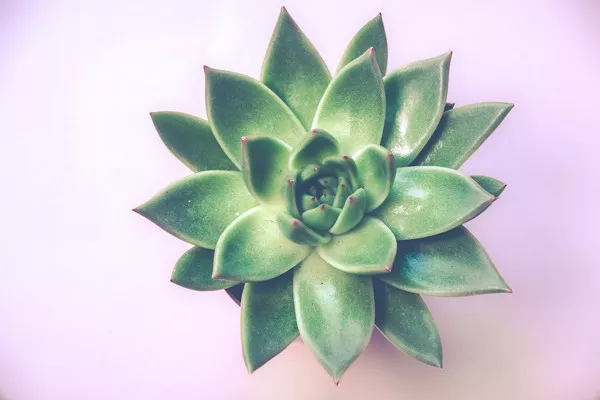Succulents are known for their ability to thrive in arid and drought-prone environments. However, despite their adaptability, these hardy plants do have limits when it comes to cold temperatures. In this article, we will explore the lowest temperatures that succulents can survive, factors affecting their cold hardiness, and essential tips for protecting them during winter months.
1. Understanding Cold Hardiness in Succulents
Cold hardiness refers to a plant’s ability to withstand freezing temperatures without experiencing damage or death. Succulents have varying levels of cold tolerance, which depend on their species and natural habitat. While some succulents can tolerate freezing temperatures, others are more sensitive and prone to damage.
2. Factors Affecting Succulents’ Cold Hardiness
Several factors influence how well succulents can withstand low temperatures. Understanding these factors can help you determine the appropriate protection and care for your succulents during colder months:
Species and Genetics: Different succulent species have different levels of cold tolerance. Some species, such as Sedum spectabile and Sempervivum spp., are known for their exceptional cold hardiness and can survive temperatures as low as -30°F (-34°C). On the other hand, species like Echeveria spp. and Aloe spp. are generally more sensitive to cold and may not tolerate freezing temperatures as well.
Native Habitat: Succulents native to colder regions, such as certain types of Sedum and Sempervivum, have evolved to withstand freezing temperatures. These plants are more likely to have natural mechanisms that protect them from cold, such as producing antifreeze compounds or undergoing physiological changes during winter dormancy.
Acclimation: Succulents that are exposed to gradually decreasing temperatures over time can acclimate and develop better cold tolerance. This process involves physiological changes in the plant’s tissues, allowing them to withstand colder temperatures. Succulents grown in controlled indoor environments may have lower cold tolerance compared to those grown outdoors.
Duration of Cold Exposure: The duration of exposure to freezing temperatures also impacts succulents’ ability to survive. Short periods of mild freezing temperatures may not cause significant harm, especially if the plants have been adequately prepared and protected. However, prolonged exposure to freezing temperatures can cause severe damage, especially if accompanied by moisture.
3. The Lowest Temperatures Succulents Can Survive
While the exact lowest temperature that succulents can survive varies among species, most succulents begin to show signs of damage or die at temperatures below 25°F (-4°C). However, it is important to note that this is a general guideline, and some species can tolerate even lower temperatures, while others may be more sensitive.
Here are some examples of succulents and their approximate cold tolerance thresholds:
Hardy Succulents: Several succulent species are exceptionally cold hardy and can survive in USDA hardiness zones 4 and below. These include Sedum spectabile, Sempervivum spp., and Orostachys spp., which can tolerate temperatures as low as -30°F (-34°C).
Moderately Cold-Tolerant Succulents: Many succulent species fall into the moderately cold-tolerant category, with temperature tolerances ranging from 20°F (-7°C) to 25°F (-4°C). Examples of moderately cold-tolerant succulents include Agave spp., Yucca spp., and some Opuntia spp.
Cold-Sensitive Succulents: Certain succulents are more sensitive to cold temperatures and can suffer damage or death when exposed to freezing conditions. Species like Echeveria spp., Aloe spp., and some Crassula spp. are examples of cold-sensitive succulents that may struggle to survive temperatures below freezing.
4. Tips for Protecting Succulents During Cold Weather
To help your succulents survive colder temperatures and minimize the risk of damage, consider the following tips:
Know Your Succulents: Understand the cold tolerance levels of your specific succulent species. This knowledge will help you determine the appropriate care and protection needed during cold weather.
Provide Adequate Drainage: Ensure your succulents are planted in well-draining soil and containers with drainage holes. Excess moisture can lead to root rot and increase the susceptibility of succulents to cold damage.
Move Indoors or Provide Shelter: If you live in an area with harsh winters or expect extreme cold spells, consider moving your succulents indoors or providing them with temporary shelter. Choose a well-lit location near a window and monitor humidity levels to prevent moisture-related issues.
Cover and Insulate: When freezing temperatures are anticipated, cover your outdoor succulents with frost blankets, burlap, or other breathable materials. This provides insulation and helps trap the heat radiating from the ground.
Avoid Overwatering: Reduce watering during the winter months. Overwatering can increase the risk of frost damage and root rot. Water sparingly and only when the soil is dry to the touch.
Mulch for Ground-Planted Succulents: Apply a layer of organic mulch, such as straw or wood chips, around the base of ground-planted succulents. Mulch helps insulate the soil, retain moisture, and protect the roots from extreme temperature fluctuations.
Monitor Weather Conditions: Stay informed about upcoming weather conditions and be prepared to take necessary protective measures. Keep an eye out for frost advisories and adjust your care accordingly.
Conclusion
By understanding the cold tolerance of your succulents and implementing appropriate protective measures, you can help them survive and thrive during colder months. With proper care, you can enjoy the beauty and resilience of these fascinating plants throughout the year.


